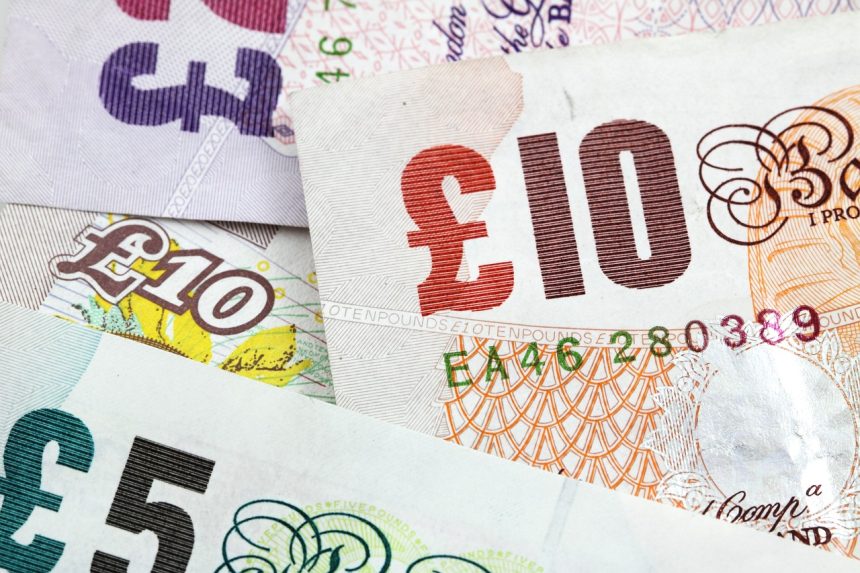The Pound Sterling held its ground in Thursday’s session as remarks from Bank of England officials underscored the central bank’s cautious and divided stance. Appearing before the House of Commons’ Treasury Committee, Governor Andrew Bailey struck a balanced but uncertain tone.
Bailey suggested that while the overall direction for interest rates would likely be downward, the pace of cuts remains highly uncertain. He expressed concern about labor market fragility, warning that job losses could weigh more heavily than previously anticipated. “The path for rates will continue to be downwards, but there is considerably more doubt on how fast we can cut,” Bailey noted, highlighting his cautious outlook.
On the other hand, Deputy Governor Clare Lombardelli and MPC member Megan Greene reinforced a more hawkish narrative. Both warned that inflation risks remained skewed to the upside and argued that loosening policy too aggressively could jeopardize the BoE’s ability to bring inflation sustainably back to its 2% target. Notably, both policymakers had supported leaving rates unchanged in the August policy meeting.
Adding to the divide, MPC member Alan Taylor pushed for more aggressive easing, suggesting that the recent uptick in inflation was transitory. He had originally voted for a 50-basis point cut in August before revising his stance to a 25-bps reduction, aligning with the majority decision.
This divergence of views highlights the BoE’s policy dilemma: balancing the risk of inflation persistence with rising concerns over employment stability.
Gilt Yields and Market Reaction
The surge in UK gilt yields also featured in Bailey’s remarks, but the Governor downplayed the notion that domestic fiscal pressures were behind the move. Instead, he suggested that the rise in yields was part of a broader global trend, dismissing the idea that the UK’s fiscal stance was uniquely responsible.
The Pound Sterling itself remained broadly stable against major peers, reflecting the market’s wait-and-see approach until clearer guidance on BoE policy emerges.
GBPUSD Edges Lower as Dollar Firms
In the FX market, the Pound slipped slightly against the US Dollar, with GBPUSD trading near 1.3435 during the European session. After a sharp selloff on Wednesday, the Greenback regained modest ground as investors digested mixed US labor market data.
The US Dollar Index (DXY), which measures the currency against a basket of six peers, ticked up to 98.25. Wednesday’s release of the JOLTS Job Openings report showed 7.18 million openings in July, missing expectations of 7.4 million and declining from 7.35 million in June. The softer data fueled bets that the Federal Reserve would cut rates in September, with CME’s FedWatch tool showing probability surging to 97.6% from 92% previously.
Still, the Dollar’s rebound suggests that markets are cautious ahead of fresh US data releases.
Traders Await US ADP Jobs and ISM PMI
Attention now turns to two key US data releases due later in the session. The ADP Employment Change report is expected to show private sector job growth of just 65K in August, down sharply from July’s 104K. A soft reading could strengthen the case for a Fed rate cut this month.
Meanwhile, the ISM Services PMI is projected at 51.0, slightly above the prior 50.1, indicating modest growth in the services sector. Any significant surprise in either report could spark volatility in GBPUSD, given the Fed’s strong data dependency.
Political Risks: US Tariff Tensions Loom
Beyond data, traders are also watching political developments in Washington. President Trump escalated the trade policy debate this week after an appeals court struck down much of his tariff expansion, calling it “illegal” and accusing him of misusing emergency powers. Trump vowed to take the case to the Supreme Court, raising fresh uncertainty over the trajectory of US trade policy.
These tariff tensions add another layer of volatility for global markets, with potential spillover effects into currencies like GBPUSD, which remains sensitive to shifts in global risk sentiment.
Conclusion
The Pound Sterling remains in a holding pattern as the Bank of England sends mixed policy signals. With Governor Bailey emphasizing caution, and other members pulling in both dovish and hawkish directions, clarity on the rate path may take time to emerge. For now, Sterling traders are turning their focus to US economic releases, which could inject fresh momentum into GBPUSD.
As the Federal Reserve edges closer to a September rate cut and political uncertainties over US tariffs intensify, both the Dollar and Sterling face pivotal days ahead. For traders, the coming sessions will likely set the tone for short-term direction, making the ADP and ISM data crucial catalysts.









